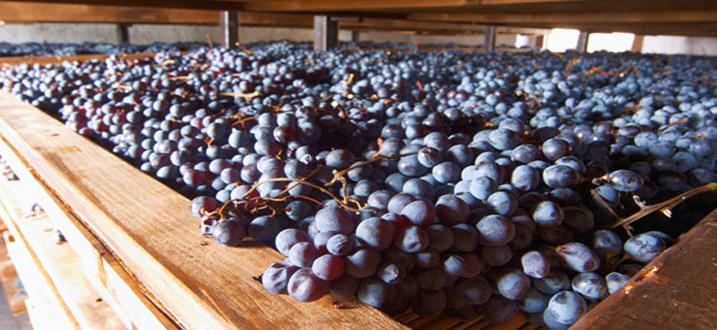hello Bottlers.
At a recent staff meeting we listened as Liz recounted her visit with the folk at Ca’ la Bionda who make the wonderful $16 Valpolicella on our shelves. I was intrigued then to hear her say that the family there was down on Amarone – dissing it a Parkerized version of Valpolicella and that they preferred to put their effort into their normale wines. The story stuck in my memory and came to mind this week while looking over what was new on jancisroboinson.com and discovered a lengthy piece by Walter Speller, the site’s Italy correspondent, on the trials of the Amaronians (not a real word).
Speller’s piece does a fine job of explaining the differences among Valpolicella normale, Valpolicella ripasso, Amarone, and recioto. If you’re a little foggy on the distinctions, or if it’s been a long time since you’ve had a refresher course, this would be a splendid place to get (back) up to speed.
As you may know, Amarone is made via the passito method, and Speller’s article has one detail I found especially interesting that bears on this. It has to do with the Amarone producers organization’s desire to expand the area where the grapes destined for Amarone can legally be grown. His comments come on the heels of tasting the 2010 Amarone vintage . . .
Far too many of the Amarones I tasted afterwards were without any clear sense of origin. By suggesting opening up the plains for vineyard plantings, the Consorzio itself seems to suggest that origin matters little. Of course, the best grapes can only come from the best vineyards, but technology plays a decisive part in the grape-drying process, which, in the past, was restricted to the higher parts, the classic hills, of the region. Before the introduction of large warehouses with climate control and, crucially, humidity control, grapes could be dried only up in the classic hills above the fog line. There were fungal attacks on grapes dried in lower-lying parts of the region. The new technology has led to cleaner wines, but also to a standardisation in taste and smell and mind-numbing similarities between many of them.

There’s plenty to detain us in this short excerpt. For one thing, the reference to “opening up the plains.” It’s good to remember that the rules that govern the production of DOC and DOCG wines specify the delimited areas in which grapes may be grown, that these areas are always subject to change under lobbying from various groups, and that the interested parties are often divided between haves and have-nots. That is, properties with prestige locations (in this case, as frequently, plots with higher elevations) have good reason to want to keep the area small, while those locked out of prime sites hope to see it expanded to include their mediocre ground. That seems to be what’s going on here.
It’s also interesting to that since there’s a special technique involved in making Amarone this, too, is carefully regulated. At some point, the authorities permitted Amarone grapes to be dried by other than perfectly traditional means, and this opened the door for some growers with facilities not above the fog line that Speller mentions to dry their grapes safely. It raises a question in my mind about whether lower altitude properties could build a drying house above the fog line and truck their fresh grapes there for drying; or whether someone might go into the business of drying large volumes of grapes by the traditional method for lowland growers in a purpose-built building on higher ground. Perhaps the rules require you to dry the grapes on the estate where they’re grown, but it would be interesting to know.
A further point. Amarone is a fine example of a situation in which the introduction of a technology (climate-controlled warehouses) makes something that was formerly impossible – or at least very risky – feasible, but at the price of a diminution in quality. The grapes need to dry at higher elevations; the better vineyards exist at these same elevations. It’s a happy natural coincidence for Amarone, and a kind of guarantee of quality for the consumer – until the means are found to undermine it.
Speller goes on to talk about how a confluence of factors seem to be casting a shadow over Amarone. I hope you’ll pop over to the site to read the article in its entirety. Not so much because you need to know all about the trials of the Amaronians, but because the story is a real window on how things other than aesthetics – like politics, self-interest, greed, technology – have a powerful influence on the kind of wine consumers are offered.
That’s it for now.
-Stephen
A reminder that weekly wine notes are archived at http://tableintime.com/weekly